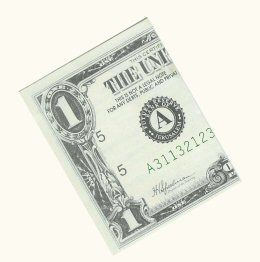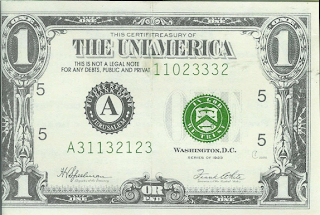Before outlining some of the ideas I have for Imperishable Fame, the Proto-Indo-European campaign setting I introduced yesterday, I thought I'd take a moment to spell out a couple working principles for this project.
Principle #1: Pseudo-history rather than pre-historyAlthough I'm digging into linguistic, literary, anthropological and archaelogical material to fuel this campaign, I'm not trying to teach Intro to Proto-Indo-European Studies here. The point of the exercise is to use this stuff to power a fantasy adventure campaign and as such I have no more loyalty to the source material than a GM running a typical
Pendragon campaign would have to Malory's
Le Morte d'Arthur. In fact if I was running
Pendragon (which I have a couple of times) I'd be equally influenced by the films
Excalibur and
Monty Python and the Holy Grail. The original source material is a vehicle, not the destination.
So, for example, S'mon asked in the comments to yesterday's post "Where would you set a PIE campaign? AIR the origin point is still in some dispute, but I'd suggest the western Caucasus/eastern Black Sea shore area - eg western Georgia and Abkhazia - gives interesting terrain and a variety of options." The short answer is "somewhere in the central region marked on this map of theorized Indo-European expansion":
But the long answer would actually be "In a mythic realm that inevitably simplifies, mythologizes and just plain screws up the central region marked on this map of theorized Indo-European expansion." Because the geography involved will be taken as informative rather than prescriptive, so I'm giving myself permission to make changes that serve the campaign better. And I'm also giving myself permission to make some mistakes and not fret about it. Similarly, I will make hash with all the other source material, sometimes by intent, sometime by ineptitude.
Principle #2: This is D&D, dammitThere's a fine line between a set of house rules and a whole new game and I can't give you an objective criteria for that sort of thing. Whether that's because I'm a noodlehead or the simple reality that this issue devolves to aesthetic considerations, I don't really know. All I know is that when it comes to D&D I have a part of my brain that seems to act a lot like Socrates' daemon: I can tell when something has gone too far, but that intuition doesn't provide much in the way of positive information. So when I say "
this is D&D" what I really mean is "this did not set off my internal 'not D&D' detector". That means every new mechanical gew-gaw introduced has to pass this simple test.
I could take some time here to outline a best guess as to what constitutes, to me, core parts of D&D. I'm going to resist that temptation because I really don't want to clog up the comments section arguing these points. Especially when you could yank any one of those 'core parts', replace it with some 'obviously superior' mechanic, and still end up with something I could recognize as D&D. I suspect that's probably because D&D isn't a shopping list of mechanics and concepts to be checked off one by one, but rather an operational paradigm/gestalt/synergy/[insert buzzword here].
The other half of the "This is D&D, dammit" principle is avoiding the alienation of players. I have a great bunch of players who deal with a lot of idiosyncratic shenanigans that, for better or for worse, dot my games. But I'm not one of those Svengali-GMs with hypno-players that will follow me absolutely anywhere. I hear the Cult Leader thing is a great gig if you can get it, but my players are pretty much regular people wanting to play regular D&D. Some days they dig my little experiments with the art form, other days they politely put up with it and get on with killing orcs. Therefore, any innovation has to pass both my own mental "is this D&D?" filter, but also "will this be the straw that breaks the players' brains?"
Principle #3: No apocalypseDefault D&D is post-apocalyptic in nature. Full stop. No qualifiers. I support this bald assertion with the fact that most campaign worlds I've seen aren't Eberron-style magic-as-tech affairs. Furthermore, most versions of the game support the existence of artifact and relics as examples of uber-awesome magic items that no PC can make. And where do you think all those monsters got all those gold coins? I submit that they are from some long lost (read: Roman) empire that came crashing down on everyone's head. D&D as Tolkien Plus Howard Plus Swiss Pikemen Versus The Dragon At The End Of Beowulf just doesn't make any friggin' sense without Númenor/Atlantis/Rome lurking in the background.
But in this campaign I am intentionally screwing with the default set-up. The Tower of Babel? Hasn't been built yet. Forget about looting the ruins of Ancient Egypt or Sumeria; Those guys finished building their first cities last Thursday.
And the Great Flood may happen during the course of the campaign. Furthermore, I'm rejecting Atlantis and Mu, not because they couldn't be of great service to a D&D campaign, but because I'm making an artistic choice to do something else.
The most obvious place this decision creeps into the campaign is in terms of treasure and magic items. Coins haven't been invented yet, so treasure will be mostly in terms of things like household goods and jewelry done up in precious metals. Many hoards will come with claimants to ownership, like all the people who got up in arms (literally) about Smaug's treasure. Look at it this way: if a dragon kicked your grandpa out of the house, wouldn't you want the family heirlooms back no matter who slew the damned thing? At the dawn of time, few manmade objects would be ancient enough to have their legal claims of ownership rendered indeterminate.
Under this plan the initial array of magic items would be limited to manmade stuff only a few generations old, which could invoke the same 'Hey, I'm the rightful heir of your treasure!' problem, or stuff made by the gods and given to humanity as a boon. Retrieving the Axe That Totally Shoots Lightning Bolts And Was Made By The God of Thunder from the bad guys seems like a pretty good way to score some of that there Imperishable Fame. The upside of the initial paucity of magic items is that I would make item creation easier than most pre-3.0 games. There's no Staff of Wizardry lying about from the bygone days of the Lich Empire, since there never was a Lich Empire, but I am totally onboard with a PC magic-user being the person who created the original Wiz Staff.
Spells would work the same way, since there aren't any musty old spellbooks lying around. In fact, there aren't any spellbooks at all. The core campaign culture is completely illiterate. M-U's take the form of epic poets who have memorized a vast corpus of magical lore and spend each morning meticulously loading their short-term memory with the passages they will recite for the day. That means you can only steal a spell from an M-U by overhearing them casting it.























